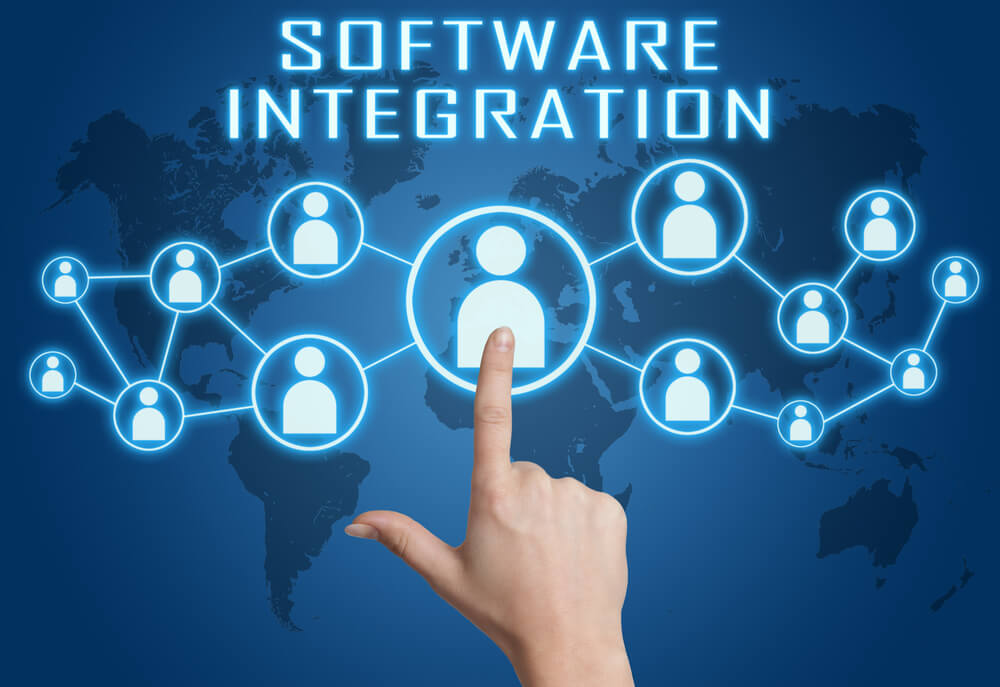The Growing Importance of Payroll Integration: Why Organizations Need Integrated Solutions

December 5, 2023
Many organizations are using different tools for managing employee tasks and handling payroll. This can make things complicated and increase the chance of mistakes. It's really important to link payroll systems with HR management tools. This helps businesses work more smoothly, reduces errors, and makes managing employees and money easier. Payroll integration is key for a smooth-running business and better management of people and finances.

Payroll integration refers to connecting payroll systems with HR, accounting, and other tools to enable seamless data flows between them. This integration is essential for streamlining processes and reducing errors resulting from manual data re-entry. With growing workforce data complexity, the need for integrated payroll solutions continues rising.
What is payroll integration?
Payroll integration refers to connecting payroll software to other tools and software applications to enable automated data exchanges and synchronization across systems. By integrating their payroll system with other HR and accounting platforms, employers can avoid entering the same data multiple times and dramatically reduce errors that result from manual data entry.
At its core, payroll integration aims to centralize data and processes between payroll, HR, time and attendance, benefits administration, accounting, and other systems containing employee and financial data. This allows seamless flow of information between applications, eliminating silos and manual workarounds. Integrated solutions can bi-directionally transfer data between systems, ensuring payroll, HR, and finance have the same up-to-date employee information.
The need for integrated solutions
Operating with disconnected systems leads to several challenges for organizations:
- Low data transparency – Vital employee data stored in disparate systems reduces visibility and makes it difficult to gain a complete picture of the workforce. For example, changes made in the HR system must be manually updated to payroll.
- Manual data entries and duplicate work – HR staff waste significant time re-entering the same information in different systems. Dual data entry invariably leads to errors that distort payroll and HR data.
- Wasted resources and complicated processes – Moving data between systems requires staff overtime and intricate workarounds. These lengthy procedures drain HR and payroll productivity.
The fundamental reason behind integrating payroll-related applications is to connect the entire employee lifecycle on a single platform. Bringing all employee data into one system eliminates blind spots, removes duplication of efforts, minimizes errors, and makes workflow management seamless. Integrated payroll solutions make data readily available to all appropriate departments (HR, finance, payroll).

Benefits of HR and Payroll Software Integration
Integrating HR and payroll software systems have become an invaluable strategy for streamlining processes, reducing errors, and improving data management for modern organizations. Several key advantages of linking these two critical platforms positively impact efficiency, compliance, reporting, and more.
Improved data security
One of the foremost benefits of integration is enhanced data security. With a unified platform, sensitive personal and financial information has fewer points of exposure. GDPR and special-category data can be better safeguarded when employee information flows directly between interconnected systems.
Data breaches become less likely when there is no manual transfer of confidential payroll details. Duplicate data entry is also minimized, reducing the risk of inaccuracies while lowering the headcount required for administrative tasks. Overall, integration allows organizations to better protect sensitive data and minimize compliance risks.
Reduced errors and boosted accuracy
By removing the need for manual re-entry between discrete systems, integrated HR and payroll reduce the risks of human error and mistakes. When data flows automatically between the platforms, inaccuracies due to typos or misreading information are eliminated.
Updates like salary adjustments or bank account changes made in one system automatically populate fields in the other, preventing mismatched data. This boosts overall payroll accuracy and reliability while saving time spent correcting errors.
Efficiency in payroll operations
Integration streamlines processes and allows more strategic use of HR and payroll teams. Time savings from automating mundane administrative tasks allow staff to focus on value-added activities like payroll analysis and exception management.
With a direct sync between systems, new hires, terminations, and employee data changes are immediately reflected in payroll. This prevents lag between HR inputs and paycheck outputs while reducing follow-ups. It also enables adjustments like one-off payments and real-time reporting with up-to-date information.

Enhanced reporting capabilities
Consolidated HR and payroll data within a unified system creates new opportunities for comprehensive analytics and reporting. Rather than generating reports from separate sources, teams can access integrated HR and payroll data from a single platform.
This holistic view allows for deeper insights and the ability to spot trends in headcount costs, overtime spending, absence rates, and other areas. Having a global analytics tool with up-to-date payroll tech empowers leaders to make fully informed business decisions backed by real-time, accurate workforce data.
Strengthened compliance
Integration provides advantages when it comes to compliance by removing risks of non-compliance before they occur. When payroll seamlessly incorporates HR changes, there are fewer retroactive adjustments needed. This means fewer late payments, incorrect deductions, and reporting errors that lead to fines and penalties.
Built-in features like tracked consent, automated document storage, and comprehensive audit trails also strengthen compliance. With a unified data set, it is easier to generate reports for requirements related to pay equity, executive compensation, and other regulations.
Integrating payroll systems with HR and other platforms is crucial for accuracy, security, efficiency, and compliance. Automating data synchronization eliminates duplicate efforts while providing organization-wide data transparency. As complexity grows, businesses should consider shifting to integrated payroll solutions for optimal functionality. Executed properly, payroll integration can provide long-term scalability and strategic advantages that positively impact bottom lines. Integrating with the professional payroll services of Talentnet not only supports long-term scalability but also brings strategic advantages that have a substantial positive effect on the financial health of a company.



